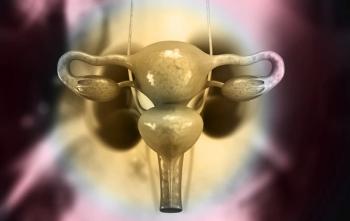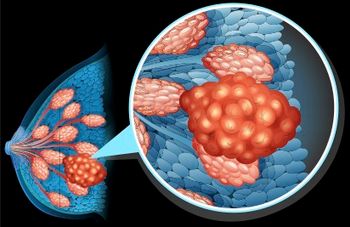
Daratumumab Regimen Shows Continued Efficacy in Transplant-Ineligible NDMM
Updated findings from the MAIA trial support the use of frontline daratumumab plus lenalidomide/dexamethasone in transplant-ineligible NDMM.
Combining daratumumab (Darzalex) with lenalidomide (Revlimid) and dexamethasone (D-Rd) demonstrated sustained improvements in progression-free survival (PFS) and overall survival (OS) vs Rd alone among patients with newly diagnosed multiple myeloma (NDMM) who are ineligible for transplant, according to updated findings from the phase 3 MAIA trial (NCT02252172) published in Leukemia.1
After a median follow-up of 64.5 months (range, 0-77.6) across the intent-to-treat (ITT) population, the median PFS was 61.9 months with D-Rd vs 34.4 months with Rd (HR, 0.55; 95% CI, 0.45-0.67; P <.0001). The estimated 60-month PFS rate was 52.1% and 29.6% in each respective arm. D-Rd improved PFS in patients younger than 70 (HR, 0.35; 95% CI, 0.21-0.56; P <.0001), 70 to 74 years old (HR, 0.64; 95% CI, 0.45-0.89; P = .0079), 75 years and older (HR, 0.59; 95% CI, 0.44-0.79; P = .0003), and 80 years and older (HR, 0.48; 95% CI, 0.31-0.76; P = .0011).
The median OS was not reached (NR) with D-Rd compared with 65.5 months using Rd (HR, 0.66; 95% CI, 0.53-0.83; P = .0003), with estimated 60-month rates of 66.6% vs 53.6% in each arm. OS improved in the D-Rd arm among patients younger than 70 (HR, 0.50; 95% CI, 0.27-0.90; P = .0179), 70 to 74 years old (HR, 0.64; 95% CI, 0.43-0.96; P = .0274), 75 years and older (HR, 0.75; 95% CI, 0.55-1.02; P = .0671), and 80 years and older (HR, 0.71; 95% CI, 0.44-1.14; P = .1574).
In the D-Rd and Rd arms, respectively, the objective response rate (ORR) was 92.9% vs 81.6% (P <.0001), the complete response (CR) or better rate was 51.1% vs 30.1% (P <.0001), the very good partial response (VGPR) or better rate was 81.5% vs 56.9% (P <.0001), and the minimal residual disease (MRD)–negative rate was 32.1% vs 11.1% (P <.0001). Among patients with a CR or better, median PFS was NR with D-Rd and Rd (HR, 0.52; 95% CI, 0.35-0.76; P = .0007), and median OS was NR in both arms (HR, 0.58; 95% CI, 0.37-0.91; P = .0164).
“This updated analysis of MAIA, with a median follow-up of 64.5 months, confirmed results of the primary efficacy analysis and the interim OS analysis, which demonstrated statistically significant and clinically meaningful improvement in PFS and OS with D-Rd vs Rd treatment until disease progression in transplant-ineligible patients with NDMM,” lead study author Thierry Facon, MD, a professor in the Department of Hematology at Lille University Hospital in Lille, France, and a member of the French Academy of Medicine, wrote with study coauthors.1 “These results, comprising the longest follow-up of MAIA with a complete dataset, together with the OS benefit observed with daratumumab-containing regimens in the ALCYONE [NCT02195479], CASSIOPEIA [NCT02541383], CASTOR [NCT02136134], and POLLUX [NCT02076009] studies continue to support the use of daratumumab in patients with [multiple myeloma].”
In the open-label phase 3 MAIA study, 737 patients were randomly assigned 1:1 to receive D-Rd (n = 368) or Rd alone (n = 369). All patients received lenalidomide at 25 mg or 10 mg orally if the patient’s creatine clearance was 30 to 50 ml per minute on days 1 to 21 plus dexamethasone at 40 mg or 20 mg if the patient was older than 75 or had a body mass index of less than 18.5 kg/m2 on days 1, 8, 15, and 22. Additionally, investigators administered daratumumab at 16 mg/kg intravenously once weekly during cycles 1 and 2, every 2 weeks from cycles 3 to 6, and every 4 weeks afterwards to patients in the D-Rd arm.
The trial’s primary end point was PFS. Secondary end points included CR rate, stringent CR rate, ORR, MRD-negativity rate, PFS on next line of therapy, and OS.
Patients with documented NDMM, an ECOG performance status of 0 to 2, and ineligibility to undergo high-dose chemotherapy with autologous stem cell transplant because of age or comorbidities were able to enroll on the study. Baseline characteristics were balanced between the D-Rd and Rd arms.
Investigators administered subsequent therapy to 35.2% of those in the D-Rd arm and 53.2% of the Rd arm. Median PFS among patients who received a subsequent line of therapy was 73.7 months vs 48.9 months in each respective arm (HR, 0.61; 95% CI, 0.49-0.76; P <.0001).
Grade 3/4 treatment-emergent adverse effects (TEAEs) were reported in 95.9% and 88.8% of the D-Rd and Rd arms, respectively. The most common grade 3/4 TEAEs in each arm included neutropenia (54.1% vs 37.0%), pneumonia (19.5% vs 10.7%), and anemia (17.0% vs 21.6%).
Overall, TEAEs resulted in treatment discontinuation among 14.6% of the D-Rd arm and 23.8% of the Rd arm. Deaths due to TEAEs occurred in 9.9% and 9.3% of patients, respectively. The incidence of grade 3/4 TEAEs and serious TEAEs was similar for D-Rd and Rd in subgroups of patients who were 75 years and older or 80 years and older.
References
- Facon T, Moreau, P, Weisel K. et al. Daratumumab/lenalidomide/dexamethasone in transplant-ineligible newly diagnosed myeloma: MAIA long-term outcomes. Leukemia. Published online February 27, 2025. doi:10.1038/s41375-024-02505-2
- Perrot A, Facon T, Plesner T, et al. Sustained improvement in health-related quality of life in transplant-ineligible newly diagnosed multiple myeloma treated with daratumumab, lenalidomide, and dexamethasone: MAIA final analysis of patient-reported outcomes. Eur J Haematol. Published online February 14, 2025. doi:10.1111/ejh.14392
Newsletter
Stay up to date on recent advances in the multidisciplinary approach to cancer.



















































































